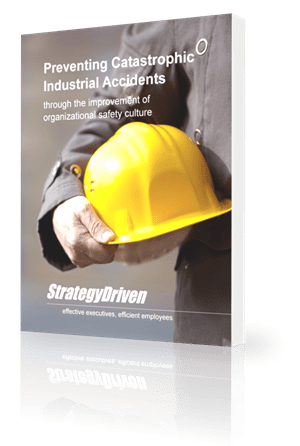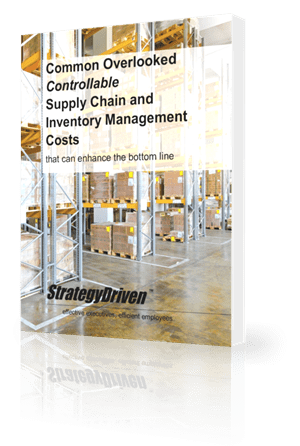6 Factors That Can Impact Your Commercial Business
Running a commercial business is a multifaceted endeavor, fraught with challenges and variables that can influence success. In the commercial world, factors ranging from sudden disasters to evolving market trends play a crucial role in shaping the business landscape. While some of these elements are within a business owner’s control, others are external forces that require a well-thought-out strategy to manage. Understanding these factors is not just about mitigating risks; it’s about seizing opportunities to strengthen and grow your business. This article aims to shed light on pivotal factors that can significantly impact commercial businesses. By preparing for these eventualities, business owners can navigate these complexities with greater confidence and agility.
1. Unforeseen Disasters
One of the most immediate and potentially devastating challenges for any commercial business is dealing with unforeseen disasters, particularly water damage. This form of disaster can strike unexpectedly due to natural events like floods or internal issues such as plumbing failures. The repercussions of water damage are far-reaching, potentially causing extensive property damage, interrupting business operations, and leading to substantial financial losses.
The key to mitigating the impact of water damage lies in prompt and effective response. Having a plan in place for such emergencies is crucial. This includes having access to reliable 24/7 Emergency Commercial Restoration Services. These professionals specialize in quickly assessing and addressing water damage, helping to minimize downtime and get your business back on track as soon as possible.
In addition to emergency services, preventive measures are also essential. Regular maintenance of plumbing and roofing, along with flood risk assessments, can help identify potential problems before they escalate. It’s also important to educate employees on how to respond in the event of water damage, ensuring a swift and coordinated effort to protect critical assets and infrastructure.
2. Market Trends and Consumer Behavior
Market trends and consumer behavior are dynamic factors that can significantly impact a commercial business. Shifts in consumer preferences, emerging market trends, and changes in spending habits can all influence a business’s success. Staying attuned to these changes is essential for businesses to remain relevant and competitive.
Understanding market trends requires thorough market research and analysis. It can involve studying consumer behavior, monitoring competitors, and staying informed about industry developments. Adapting business strategies in response to these insights is crucial. For instance, if consumers are shifting towards online shopping, a business might need to enhance its e-commerce capabilities.
In addition to adapting to current trends, anticipating future changes can give a business a competitive edge. It could involve investing in new product development, exploring new market segments, or adopting innovative marketing strategies. By being proactive and responsive to market trends and consumer behavior, businesses can better meet customer needs and seize new opportunities.
3. Technological Advancements
The rising pace of technological developments offers both opportunities and obstacles for commercial businesses. Technology can revolutionize the way businesses operate, offering new tools for efficiency, communication, and data analysis. However, keeping up with technological changes can be daunting, especially for small to medium-sized enterprises.
Investing in technology is crucial for staying competitive, and this might include upgrading to more efficient software systems, utilizing data analytics to inform business decisions, or adopting new communication tools to enhance customer engagement. However, it’s important to balance the benefits of new technology with the costs and potential disruptions to operations.
Equally important is training and development. Ensuring that staff are well-versed in new technologies is vital for maximizing their benefits. Regular training sessions, workshops, and conferences can keep employees up-to-date and skilled in utilizing modern technological tools.
4. Regulatory Changes and Compliance
In the ever-evolving landscape of commercial business, regulatory changes and compliance remain significant factors. Navigating the complex web of laws, regulations, and compliance requirements is crucial for any business looking to avoid legal pitfalls and maintain a good standing. The impact of non-compliance can be severe, ranging from hefty fines and legal disputes to reputational damage.
Staying abreast of regulatory changes requires constant vigilance. Businesses should consider investing in legal expertise or compliance software to keep track of applicable laws and regulations, and it’s especially important for industries that are heavily regulated, such as healthcare, finance, and food service.
Implementing a robust internal compliance program is also key. Regular training and education for employees ensure that everyone in the organization understands their role in maintaining compliance. This program should be dynamic, adapting to new regulations as they arise.
Moreover, compliance should be seen not just as a legal requirement but as an opportunity to establish best practices within the business. Ethical and responsible business conduct can foster trust with customers and partners, enhancing the business’s reputation and long-term success.
5. Economic Fluctuations
Economic fluctuations are an inevitable aspect of the business landscape, impacting consumer spending, investment, and overall market dynamics. For commercial businesses, these fluctuations can dictate demand for services and products, influence pricing strategies, and affect the bottom line.
So, to mitigate the effects of economic downturns, businesses need to develop resilient financial strategies. This includes maintaining a healthy cash flow, diversifying revenue streams, and managing costs effectively. During economic upswings, businesses should capitalize on increased demand and consider investing in growth opportunities.
Anticipating economic trends can also be beneficial. This foresight allows businesses to adjust their strategies in advance, whether it’s ramping up marketing efforts during a boom or tightening budgets in anticipation of a slowdown. Staying informed through economic reports, market analyses, and industry forecasts is vital for this purpose.
6. Competition and Market Saturation
In a world where new businesses are constantly emerging, competition and market saturation pose significant challenges. Standing out in a crowded marketplace is essential for survival and growth. It requires a deep understanding of what makes the business unique and leveraging this to differentiate from competitors.
Developing a unique selling proposition (USP), which could be exceptional customer service, innovative product offerings, or a unique approach to business operations, is critical. The USP should resonate with the target audience and be clearly communicated in all marketing and branding efforts.
Additionally, staying attuned to market trends and customer feedback can guide businesses in refining their offerings to better meet customer needs. This continual adaptation and improvement can help maintain a competitive edge.
Effective marketing strategies are also key to overcoming competition. Utilizing digital marketing, social media, and traditional advertising can increase visibility and attract new customers. Collaborating with other businesses and engaging in community events can also broaden the business’s reach.
Conclusion
Successfully navigating the commercial business landscape requires an understanding of the myriad factors that can impact operations. From unforeseen disasters to regulatory compliance, economic fluctuations, and intense competition, these challenges demand a proactive and strategic approach. By staying informed, adaptable, and customer-focused, businesses can not only withstand these challenges but also leverage them as opportunities for growth and innovation. In the complex world of commerce, preparedness and agility are the keys to enduring success.














Leave a Reply
Want to join the discussion?Feel free to contribute!